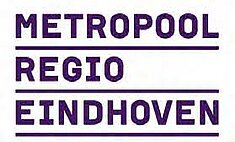Letter of intent for solar panels along A67 signed

Municipalities and the state want to generate sustainable energy along highway A67 in North Brabant. On Friday 19 April 2024, the parties involved signed a letter of intent to explore together in the Programme for Energy Generation on State Property (OER) whether the intended locations are suitable for this purpose.
Why OER?
In the Energy Generation on Government Real Estate (OER) Program, we explore where and how, with the support of the environment, we can generate large-scale energy on government lands. The program prepares for the actual realization of energy projects by developers. The aim of the OER program is to support the implementation of Regional Energy Strategies (RES) and to make progress towards achieving climate goals.
To assist municipalities in their energy challenge, the national government makes its lands available to energy developers for energy generation through the OER program. This also includes lands along highways managed by Rijkswaterstaat. Additionally, adjacent lands of municipalities and provinces can also be considered.
Preliminary exploration
The municipalities Asten, Bladel, Deurne, Eersel, Eindhoven, Geldrop-Mierlo, Heeze-Leende, Someren, Veldhoven, and Waalre, together with the province of North Brabant, submitted a request to the Ministry of Economic Affairs and Climate to investigate the potential for generating sustainable energy from the government lands along the A67 highways. Preliminary research by the aforementioned parties and Rijkswaterstaat has shown that the available government lands have sufficient potential for energy generation. These municipalities and the national government are committed to making energy generation on these lands possible. Therefore, they are signing an intent declaration today to proceed to the next project phase.
Next phase
In the next phase, the location selection, landscape integration, and generation potential will be further developed. The goal is to arrive at a set of parcels, technical prerequisites, and spatial design principles for the realization of a financially feasible solar park that is supported by the community. A total of approximately 18 hectares of lands have been identified as promising. These are mostly lands in interchanges or along the highway. Due to location-specific characteristics, some parcels may still be excluded.
Grid connection
The energy grid in North Brabant is overloaded. For this reason, the OER project team continues to engage with the grid operator to explore possible solutions. Furthermore, opportunities to reuse the generated energy at the same location, such as for adjacent industrial estates, are also being explored.
Participation
The collaborating parties pay attention to the interests of the community. To ensure these interests are well represented, a participation process will be initiated. The community will be involved in this process at a later stage. In addition to participation in the design, it has been agreed upon in the Climate Agreement that in the generation of renewable energy on land (solar parks and wind turbines), citizens must be able to benefit from the project for at least half. This can be achieved, for example, by making local residents half owners of the solar park or by investing a portion of the profit in community projects. How this will be implemented will be further elaborated in the coming months.
Parties
The parties that have signed the intent declaration are:
- Municipality of Bladel
- Municipality of Geldrop-Mierlo
- Municipality of Eersel
- Municipality of Heeze-Leende
- Municipality of Veldhoven
- Municipality of Someren
- Municipality of Eindhoven
- Municipality of Deurne
- Municipality of Waalre
- Municipality of Asten
- Rijkswaterstaat
